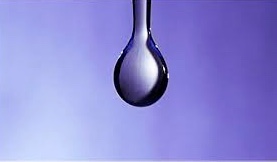A group from the University of Pittsburgh School of Medicine published results from a study aimed at understanding the role of subclinical herpesvirus shedding in HIV+ patients on antiretroviral therapy. The group obtained blood, semen, throat washing, urine, and stool samples from 15 antiretroviral-treated HIV-1-infected men with CD4+ T-cell reconstitution, and 12 age-matched HIV-negative controls at four separate timepoints over 24 weeks to measure DNA levels of cytomegalovirus (CMV), Epstein–Barr virus (EBV), herpes simplex virus 1 and 2, HHV-6, and HHV8 in each of the various sample types.
Interestingly, the group found that HHV-6 shedding rates correlated negatively with plasma levels of interleukin-6, soluble CD163, and interferon gamma-induced protein 10. This finding appears to contradict previous hypotheses which had suggested that HHV-6 shedding (as well as shedding of other herpesviruses) contributes to increased levels of inflammation often observed among treated HIV+ individuals. While the authors suggest these data may indicate HHV-6 is associated with an anti-inflammatory environment in HIV+ patients, the immunological mechanism behind this relationship remains unclear. Several past studies have suggested a complicated interaction between HIV and HHV-6 in patients with HIV/AIDS, and in fact HHV-6 was first isolated from a patient with HIV.
Also of note, there was no significant difference in HHV-6 shedding rate between HIV+ patients vs HIV- controls, which was quite different from EBV and CMV. The HIV+ group demonstrated higher DNA shedding rates in all sample types for EBV (mean of 21% vs. 12.5%; P=0.032) and CMV (mean of 10.7% vs. 4.2%; P=0.039) compared to HIV- controls. An earlier study reported that while CMV shedding was higher, HHV-6 shedding in saliva was lower in HIV patients compared to healthy controls (Licht 1998).
CMV was mostly detected in semen (6/15) followed by urine and throat washings (both 4/15) while HHV-6 was mostly detected in throat washings (14/15). However, shedding rates from these three herpesviruses did not correlate with levels of T-cell activation.
Read the full paper: Agudelo-Hernandez 2017

